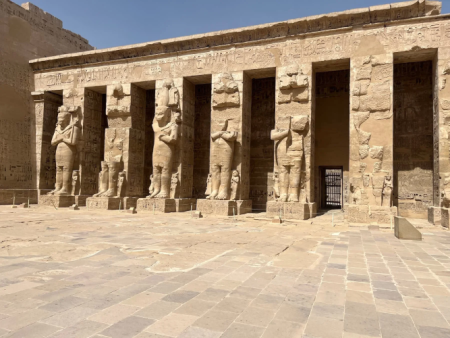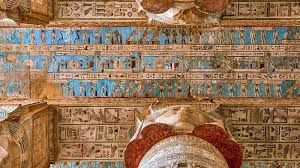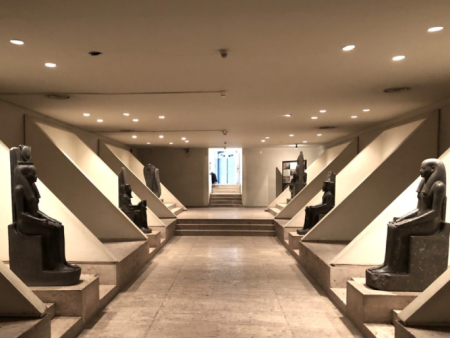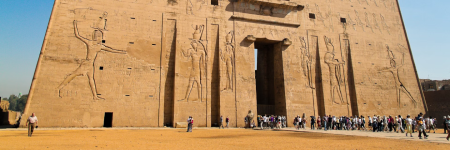The Temple of Seti

The Temple of Seti: The Eternal Legacy of Ancient Egyptian Art and Architecture
Deep in the sands of Abydos lies one of ancient Egypt’s most magnificent and spiritually charged monuments—The Temple of Seti. This sacred sanctuary, built by Pharaoh Seti I during the Egypt 19th Dynasty, stands as a timeless masterpiece that bridges the mortal and divine realms. Known for its exquisite carvings, flawless symmetry, and profound inscriptions, the Temple of Seti remains one of Egypt’s most spiritually resonant royal temples. It’s not merely a temple; it’s a doorway into ancient theology, royal devotion, and artistic perfection.
Constructed in honor of Osiris, Isis, and other revered deities, this temple captures Egypt’s mystical charm like no other. Travelers seeking the heart of Egyptian spirituality often find themselves in awe of its multi-layered symbolism and lavish detailing. Every relief whispers tales of creation, resurrection, and divine kingship. The temple’s architectural design sets it apart from the more monumental structures of Thebes or Luxor City, providing a more intimate yet equally majestic portrayal of divine communion.
Unlike many temples that glorify the living Pharaoh, the Temple of Seti delves into the afterlife and the cosmic order. Its seven sanctuaries, dedicated to different gods, reveal Egypt’s devotion to balance, unity, and eternity. Modern explorers, historians, and spiritual seekers continue to be drawn to this ancient marvel, where every stone still radiates the aura of devotion, artistry, and eternal life. For those who crave an authentic journey beyond mainstream routes, the Temple of Seti is an unforgettable revelation—an essential stop on any Egypt Travel Packages itinerary.
Historical Background: The Divine Vision of Pharaoh Seti I
Pharaoh Seti I, father of the legendary Ramses II, commissioned this temple as a spiritual center for the gods of Egypt and a memorial to his reign. Built during one of Egypt’s most artistically accomplished eras, it symbolized not only devotion but political stability and divine legitimacy. The construction began under Seti I and was later completed by his son, Ramses II, whose influence extended far beyond his father’s foundations. Visitors familiar with the Statue of Ramses II will recognize echoes of that same grandeur here in Abydos.
Seti I’s temple was part of a grand vision to restore ancient traditions after the religious upheavals of Akhenaten’s reign. The temple’s reliefs celebrate this revival through intricate carvings depicting offerings, processions, and celestial harmony. Seti’s meticulous craftsmanship and theological precision make this site an unparalleled historical document of Egyptian religion and culture.
Architectural Brilliance and Design Layout
The Temple of Seti showcases a unique L-shaped layout, diverging from the standard axial plans of Theban temples. This complexity reflects its dual purpose: a place of worship and commemoration. Seven sanctuaries line the main hall, each devoted to a deity—Osiris, Isis, Horus, Ptah, Re-Horakhty, Amun-Ra, and Seti I himself. These shrines symbolize Egypt’s spiritual inclusiveness, blending divine and human realms harmoniously. Within the sacred chambers, one can still see perfectly preserved reliefs, glowing in soft hues that defied thousands of years of decay.
Every relief inside the temple seems alive with motion. The hieroglyphs are so vividly etched that even modern scholars marvel at their realism. Some scenes depict Seti performing rituals before gods in a manner that merges art and theology flawlessly. One of the temple’s most intriguing mysteries is the so-called Abydos King List, an ancient chronicle of seventy-six pharaohs, linking Seti’s lineage to the earliest Egyptian rulers. This inscription remains a cornerstone for Egyptologists tracing the nation’s royal chronology.
Religious Symbolism and Theological Role
The Temple of Seti is more than architecture—it’s a spiritual map of eternity. Dedicated primarily to Osiris, the god of the afterlife, the site embodies the Egyptian concept of resurrection and divine order. The temple’s reliefs narrate the mythical journey of Osiris through death and rebirth, a concept that influenced Egyptian civilization for millennia. Behind the main temple lies the mysterious Osireion, a subterranean structure believed to symbolize the tomb of Osiris himself. This structure, with its megalithic stonework and water basin, evokes the primeval waters of creation—a powerful metaphor of life’s renewal.
Artistic Style and Masterful Craftsmanship
The artistry at the Temple of Seti reflects the pinnacle of ancient Egyptian craftsmanship. Every line, curve, and pigment serves a divine purpose. The reliefs feature delicate details in musculature, facial expression, and proportion unmatched in any other temple. The subtle gradation of color, though faded over centuries, still reveals the artists’ mastery. The quality of the inscriptions is so precise that many experts compare them favorably to the carvings found in Karnak Temple and Luxor Temple.
Even more remarkable are the depictions of Seti’s divine coronation and offerings to deities. These symbolic scenes convey both humility and authority, illustrating Egypt’s sacred belief that kingship flowed directly from the gods. The atmosphere within the temple, illuminated by shafts of sunlight, creates a breathtaking connection between the mortal and celestial worlds.
The Osireion: A Portal to the Ancient Underworld
Located behind the main sanctuary, the Osireion is one of the most enigmatic structures in Egypt. Built on a lower level and surrounded by water channels, it’s thought to represent the tomb of Osiris or the primordial mound of creation emerging from the waters of chaos. Its colossal granite blocks bear resemblance to megalithic architecture, leaving many to speculate about its origins and symbolic depth. The Osireion’s design mirrors ancient Egyptian cosmology, portraying rebirth and divine renewal. Visiting it feels like descending into the mythic realm of the gods—an experience unlike any other temple in Egypt.
Modern Exploration and Archaeological Significance
Archaeologists continue to uncover hidden details about the Temple of Seti and its role in Egyptian theology. From the discovery of painted ceilings to the decoding of intricate texts, research here has reshaped our understanding of Egypt’s sacred art. New findings suggest that Abydos was more than a burial site—it was a spiritual gateway connecting the living with the afterlife. Modern travelers on Best Nile River Cruises often include Abydos in their itineraries, seeking to witness this incredible heritage firsthand.
Travel to Abydos: Experiencing the Timeless Magic
Reaching the Temple of Seti is a rewarding journey through Upper Egypt’s desert landscapes. Many visitors combine a visit to Abydos with nearby destinations such as The Valley of the Kings or the Temple of Hatshepsut, enriching their exploration of the region’s royal legacy. Whether you arrive by road or cruise along The Nile River, the journey itself mirrors the ancient pilgrimages once undertaken by pharaohs and priests seeking communion with Osiris.
Today, guided tours and Egypt Luxury Tours offer in-depth experiences of the temple’s sacred spaces. Expert Egyptologists help travelers decode the hieroglyphs, explaining the meanings behind each relief and inscription. Standing inside this ancient testament to faith and artistry, visitors can almost hear the echoes of ancient chants reverberating through time.
Preserving Egypt’s Ancient Heritage
Preservation of the Temple of Seti remains an ongoing mission. Archaeological teams work tirelessly to protect its delicate reliefs from erosion and human interference. Restoration efforts have brought back the vibrancy of its ancient colors, allowing future generations to experience its splendor. International collaborations have also enhanced 3D documentation, ensuring digital replicas remain for study and conservation. As a cornerstone of Egypt’s cultural identity, the temple continues to inspire reverence and scholarly pursuit around the globe.
Frequently Asked Questions About the Temple of Seti
1. Where is the Temple of Seti located?
The Temple of Seti lies in Abydos, approximately 11 kilometers west of the Nile River in Upper Egypt. Abydos was one of the most sacred cities in ancient Egypt, known as the cult center of Osiris, the god of the afterlife.
2. Who built the Temple of Seti?
The temple was commissioned by Pharaoh Seti I of the 19th Dynasty and completed by his son, Ramses II. It served as both a dedication to the gods and a memorial to Seti’s reign.
3. What makes the Temple of Seti unique?
Unlike most Egyptian temples, the Temple of Seti features seven sanctuaries dedicated to different deities. Its reliefs are considered among the finest in Egypt, showcasing unparalleled craftsmanship and spiritual symbolism.
4. Can visitors explore the Osireion?
Yes, visitors can access parts of the Osireion, located behind the main temple. Its massive stone architecture and subterranean design create an unforgettable experience, representing Egypt’s mythic connection to the afterlife.
5. How can I visit the Temple of Seti?
You can reach Abydos by road from Luxor or through organized Egypt Excursions that include guided tours of the site. It’s also a popular stop on Egypt Nile Cruises, offering travelers the chance to explore one of the most sacred temples of ancient Egypt in comfort and style.














